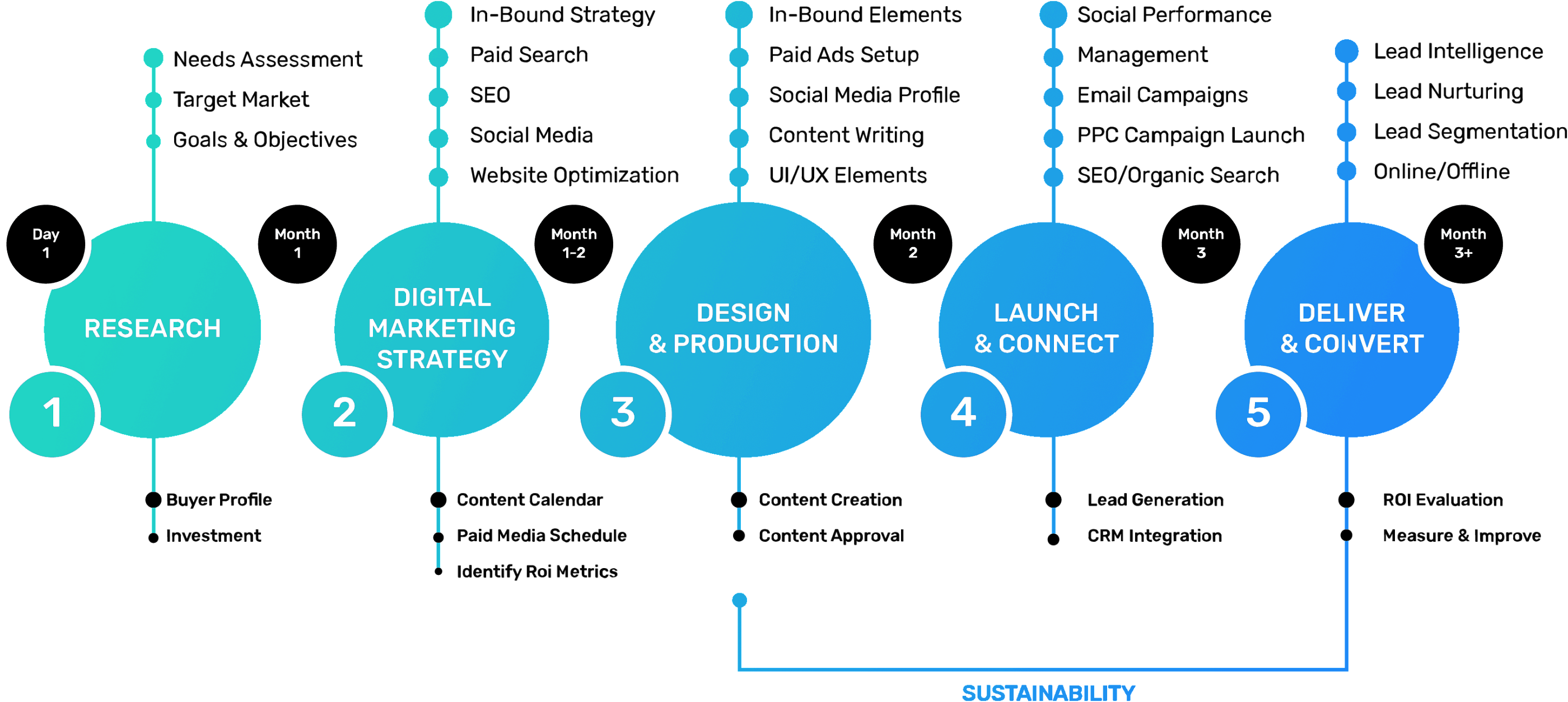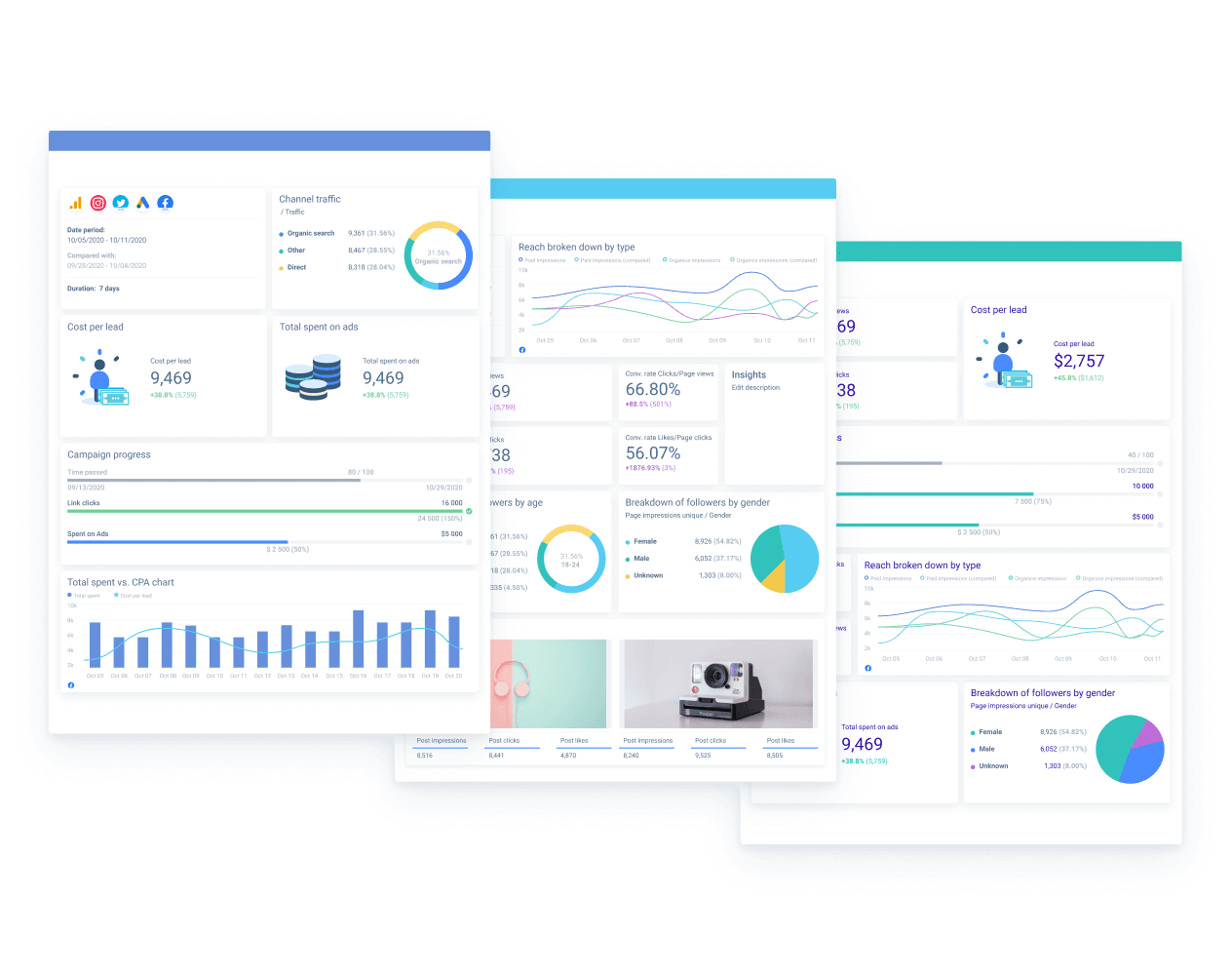The Ultimate Guide to Data-Driven Marketing and Its Benefits
To develop the most effective marketing strategy, marketers need to rely on Big Data. Before building any processes, marketers should ask themselves a number of questions to create scalable and profitable data-driven marketing strategy.

May 26 2021●6 min read

- What is data-driven marketing?
- Traditional marketing vs. data-driven marketing
- Why is data-driven marketing important?
- Key benefits of data-driven marketing
- Personalization — an important aspect of data-driven marketing
- How to create a successful data-driven marketing campaign?
- Examples of Data-Driven Marketing
- Bottom line
Ultimately, data-driven marketing strategy is gaining more attention over the past years as it allows marketers to run better ad campaigns and increase their ROI significantly.
But what do data-driven marketing efforts cover? Today we will present you the most important things you need to know about data-driven marketing and why it is vital for companies and businesses’ success in all industries.
What is data-driven marketing?
Long story short, it is a set of tactics and techniques that use a large amount of data obtained through customer interactions. This data allows them to better understand customer behaviors, preferences, and purchase motives and develop effective marketing plans.
This valuable data is imperative for businesses of all types, as it helps them improve their marketing strategy and customer experience, resulting in greater revenue. Thanks to customer data, marketing professionals can predict their goals and future actions and develop personalized data-driven marketing strategies that would bring the highest ROI (return on investment).
Traditional marketing vs. data-driven marketing
To better understand the difference between traditional and data-driven marketing, let’s closely compare both.
The focus of traditional marketing has always been to identify the needs and wants of ICPs (ideal customer profiles). This tool's main feature is to understand the audience, discover their needs, and develop strategies to deliver a product or solution that meets their needs and solves their problems.
To accomplish these objectives, traditional marketers could only rely on their assumptions about their target customers and the market research available at the time. However, this kind of marketing tactic is often based on trial and error. Organizations had to launch multiple strategies to identify one that would help them achieve their goals.
On the other hand, data-driven marketers can connect to customers at the right time with the right offer. Thanks to customer insights, modern marketers can target a specific audience, personalize customer experience accordingly, acquire new customers, and improve the company's marketing strategies in real-time. Data-driven marketing eliminates the need to launch multiple campaigns just to identify the problem potential customers are facing.
Why is data-driven marketing important?
Nowadays, nobody wants intrusive and irrelevant ads in front of them. According to the latest Hubspot research, 64% of respondents said they hate ads online because they are annoying and intrusive.
Just imagine — you are running traditional marketing campaign that might seem funny and converting to you. However, the truth is that potential customer finds it extremely annoying. How to find the lucky formula that will help to convert regular Internet users into customers? Data-driven marketing.
Marketers who use a data-driven strategy significantly increase the likelihood that their target customers will take the desired action, such as joining a webinar, making a purchase, clicking on an ad, or reading a blog post.
Analyzing and interpreting customer data and digital profiles of individuals helps companies understand customer needs and desires to improve brand perception and customer experience. Data-driven strategies allow highly targeted engagement and better conversion rates.
Thanks to this marketing approach, marketers can target the right audience, grab their attention and give them what they want at the right time.
Ultimately, higher conversion rates mean higher ROI.
Key benefits of data-driven marketing
By choosing to rely on data-driven marketing strategy, you are in for success. Here are a few key benefits:
A chance to improve customer experience — by using in-depth consumer profiles, marketers can personalize customer experiences, thus building trust between the company and the consumer. Potential customers won’t opt-out in the middle of the purchase journey, meaning that you will have a shorter customer purchase journey, higher satisfaction rate and ROI.
Optimized marketing attribution. Analytical tools used in data-driven marketing allow marketers to identify the portion of the ad budget that has the greatest impact on brand awareness or conversions. Ultimately, marketing professionals can see which ads or campaigns are not driving any potential customers, helping them optimize their spending. Companies can properly allocate a budget by seeing what moves potential customers and existing customers down the funnel.
Creating relevant content. By gaining insight into what type of content targeted users prefer to engage with, marketers can deliver the right message at the right time. Data-driven marketing helps professionals discover the types of content and messages that resonate with their target audience, helping them better understand prospects.
Identifying the best channels for promotion from the data that was collected from analytical tools. Data can also help marketers find out which channels they should use to target their customers.

Personalization — an important aspect of data-driven marketing
According to Segment, 71% of the consumers feel frustrated when shopping experience is not personalized. Ultimately, Statista found that 90% of U.S. respondents said personalized marketing is a key to pursuing them. This makes the statement that in today’s digital marketing landscape, personalization is everything, even stronger.
A complex data-driven marketing strategy takes into account data, media, creativity, and other factors. Marketing teams should focus on the communication channel, actual ad, customer behavior and trends.
In the past, marketers produced one creative or message for every marketing channel. To grab consumers’ attention, they used rich media ads and other flashy ad formats now considered intrusive marketing tactics.
Now marketers are focusing on more user-friendly strategies that use personalization features to attract potential customer. With the convergence of data and media, marketers can personalize almost every aspect of the Buyer’s Journey.
Nowadays, there are various marketing channels, including:
- Emails
- Display ads
- Videos
- Social media
Each of which requires its own type of data-driven marketing strategy. Therefore, you can have different formats for one creative. Data doesn't make marketing simpler, but data-driven marketing is yielding better results.
The only question remains — whether marketers can stay creative with the huge amount of data. And the answer is — well, they not only need to be creative but should also use smart tactics.
Reasons, why marketers need personalization in their data-driven marketing strategies, include:
- Analyzing and integrating customer data for improved service and customer experience. Many marketing professionals use Google Analytics to view their customer data. However, platforms like Whatagraph offer a more visual way to track & analyze Big Data.
- Bi-directional integration, i.e., automatic updating of customer data in existing and new tools
- Targeting and nurturing every anonymous visitor and converting them into potential leads
- Providing the right analytics to correct existing gaps
- Enabling messages to be sent at the right time
- Helping you choose the right communication platform & format
How to create a successful data-driven marketing campaign?
Here are the six most important steps to go through when creating a data-driven marketing campaign:
Define your goal
Marketers should first define the goal of their marketing campaign. The goals can vary — from increasing brand awareness, improving customer satisfaction to boosting sales and increasing traffic. The goal should be SMART, meaning:
- Specific — as specific as possible.
- Measurable — the progress towards the goal should be measurable. Setting a specific number for email list subscribers, sales, or website traffic are examples of how to do it. These quantifiable measures are known as KPIs or key performance indicators.
- Achievable — marketers should outline a reasonable strategy to accomplish their goals.
- Relevant — reaching the goal is expected to benefit the business in some way. This can mean not only money but traffic, contacts or brand awareness.
- Time-bound — every goal should have a deadline. Time tracking apps will help you to meet them.
Knowing business’s target audience
Marketers should know the specific audience they want to reach to achieve their goals. Targeting all people is not only ineffective but also expensive. That’s why you need to narrow it down to a specific group of people who are most likely to convert or take the desired action to bring you a step closer to your goal.
Try to figure out the type of people who need your product or service the most. Knowing your audience will make your message more relevant to them, resulting in higher conversion.
Here are three factors to consider when identifying your target audience:
Demographics include details such as gender, age, education level, marital status, location and income level. Choose as much relevant information as you can to determine your target audience. You can also include psychographic information such as opinions, habits, values, and interests.
Behaviors — run research on the behaviors of your target audience and compare them to your marketing goal. For example, if your goal is to increase sales, research the purchases they have made in the past. You can also consider the type of online content and ads they respond to, as well as their social media activity.
Motivations — when you know the goals of your target audience, you can figure out how to pursue them. You can offer them something that will help solve their problem or accomplish their goals while achieving your own.
Getting the right data
Successful data-driven marketing campaigns require first-party data or accurate and relevant data obtained from past customers.
Extra tip: sometimes, when you have all this data or struggle to collect it, you need a tool to work efficiently. Software like Whatagraph can make it easy for you to organize, analyze, and present data in an easy-to-understand way and make it much easier to define your target audience and their future steps.

Choosing correct marketing channels
What marketing channels do you want to use for your marketing campaigns? Is it your company’s blog, social media pages, email or paid ads?
To make the right decision, use your customer data, and you’ll see what channels generate the most relevant traffic. Don’t forget to consider the pros and cons! For example, Facebook is better for text-heavy content rather than Instagram.
Produce relevant content
When determining your data-driven marketing content, don’t forget to create it according to your target audience preferences, strategy goals or campaign objectives, channels and customer journey.
Track & analyze your data-driven marketing campaign performance
This involves collecting data from all your marketing channels and measuring your success to see what is working and what is not. With these insights, you can narrow your audience even more, eliminate ad waste, and identify patterns in high-converting content.
Examples of Data-Driven Marketing
Here are a few great examples of data-driven marketing strategies that you can use to increase your ROI:
Retargeting
Most visitors don’t convert on their first visit. Luckily, there’s retargeting that provides a second or third chance to make a good impression.
Website visitors are the data used in this situation, as ads are only presented to people who’ve previously viewed a specific page on your website or your entire site.
Data-Driven content
We’re all interested in people similar to us, people who share the same hobbies or struggle with the same problems. That's why B2B companies have started releasing internal data from their user base or platform.
However, B2C companies can also benefit from data-driven marketing. For example, OkCupid, a dating website, partnered with Rosetta Stone, a language learning software and published a survey showing that 60% of singles have no problem dating a person who is not fluent in their language. This is valuable information for their marketing strategy. Needless to say — interesting and engaging with their target audience.
Personalized email campaigns
Let’s make things clear — if a user is only looking for women's clothing, there's no reason they should see ads with men's clothing.
Personalizing email marketing makes it much more effective. It also gives marketing teams the ability to put that personalization on autopilot.
Data can also influence email marketing by sending follow-up emails after the initial purchase, suggesting related products, showing products for sale, and retrieving abandoned carts.
Bottom line
In today’s extremely competitive world, data-driven marketing strategies are vital for companies and businesses’ success across all industries.
It allows marketing professionals to harness the power of data analytics to target the right audience.
Leverage data-driven solutions and optimize your marketing spend, increase your ROI and profits and most importantly — understand what marketing efforts are working the best for your business.

WRITTEN BY
Benediktas KazlauskasBenediktas is a detail-oriented writer with a passion for marketing and technology. Using his vast experience in Business Management and Sales, he approaches every blog with the same idea: How to make readers come back for more?